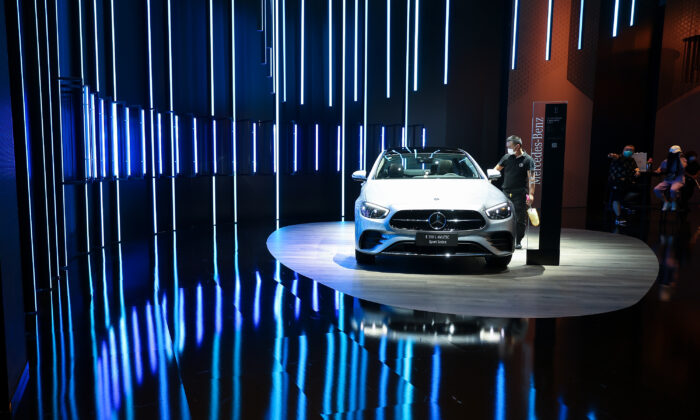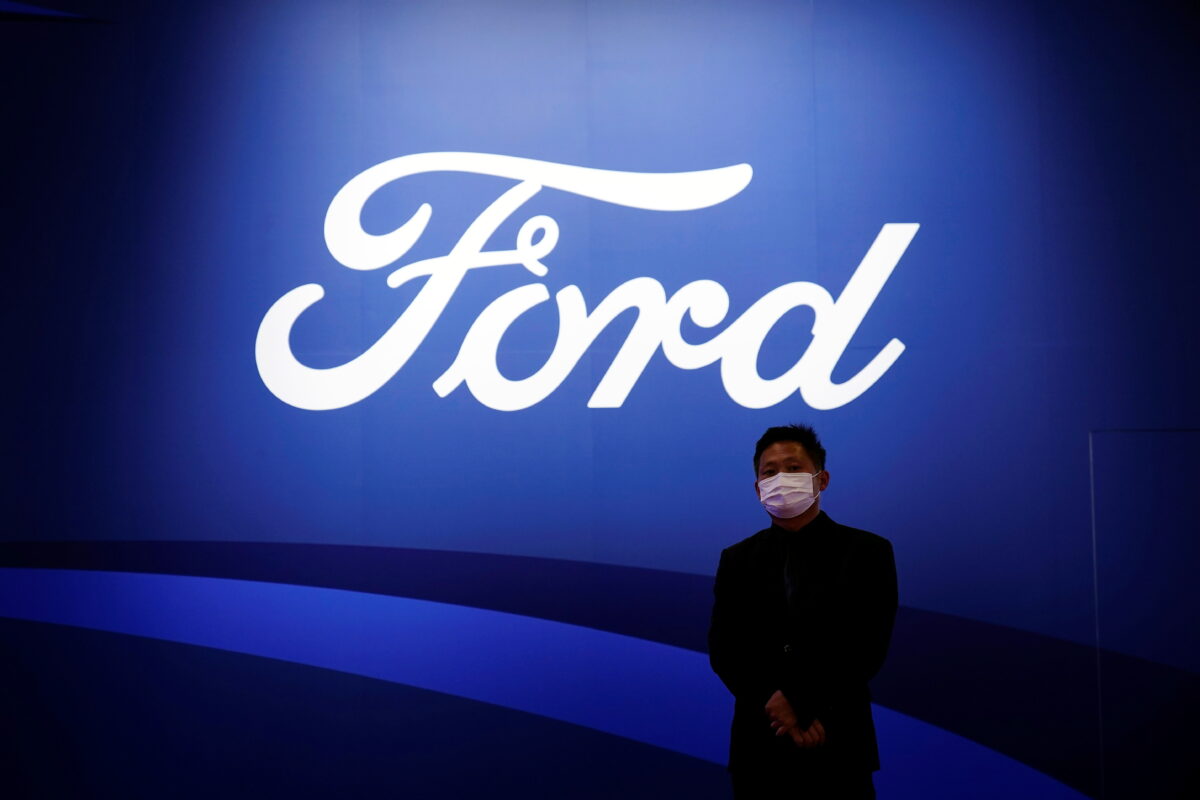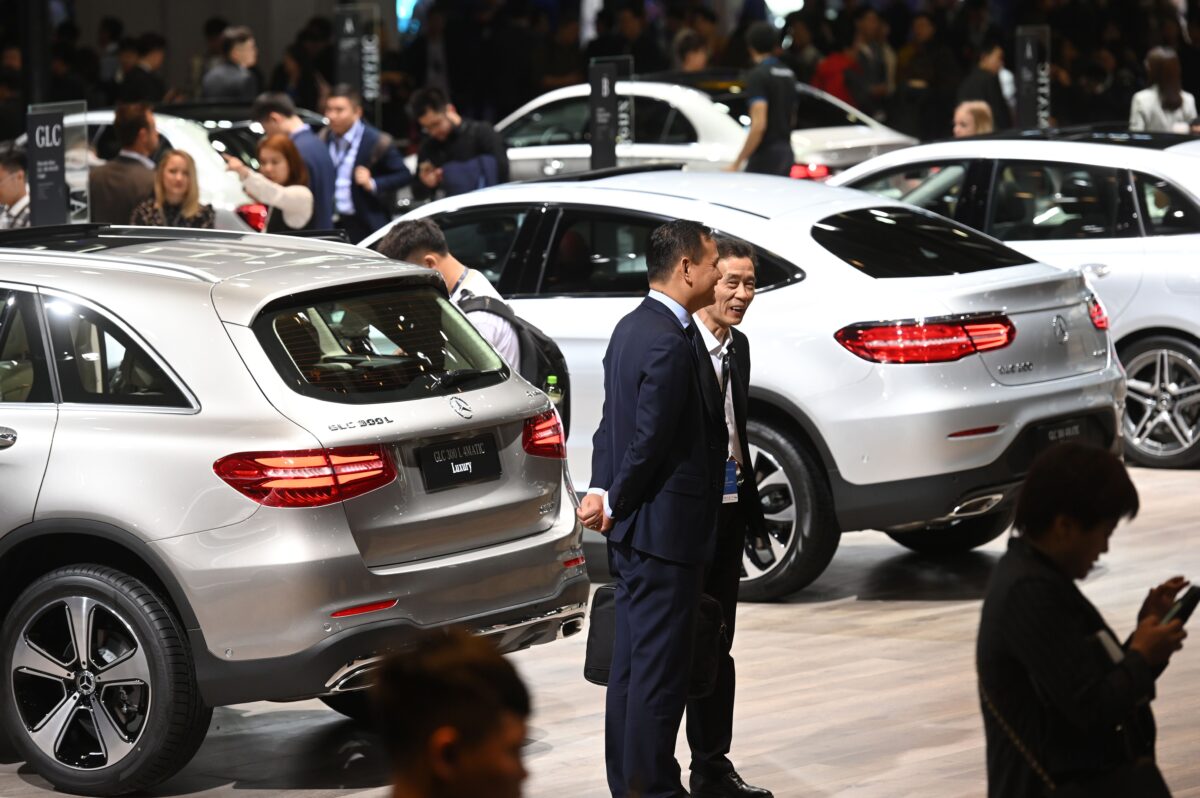
News Analysis
Technology regulations emanating from Beijing are a foot in the door that may someday take away your right to drive.
This month, Mercedes-Benz is opening a tech center in Beijing with 1,000 engineers and $170 million in new equipment. Top of mind for the engineers will be preparing Mercedes-Benz for 2025, when all new cars in China will likely be required to be V2X-capable, meaning they can communicate with “everything” from other vehicles, to roads, smart traffic lights, road cameras, 5G towers, and satellites through centralized data servers that are themselves easily controlled by governments.
Now envision those networked cars with artificial intelligence (AI) autonomous driving capabilities and no need for a steering wheel. What used to be the freedom of driving has now reduced drivers to passenger pulp, to be transported along government-approved routes, to government-approved jobs, and back to government-approved apartments.
Networked driverless cars are likely to happen in China, earlier than the rest of the world. China is already a leader in the AI needed for self-driving cars. And Beijing in February 2020 issued its “Smart Vehicles Innovation Development Strategy,” paving the way for its subsequent mass production of smart vehicles equipped with V2X technology. erosion of Chinese citizens’ right to drive a regular car will accelerate in 2025, when new cars in China will likely be required to be fully V2X-capable.
In addition to Chinese car manufacturers, Ford, GM, Buick, Audi, BMW, Mercedes, and Volkswagen—all of which seek more market share in China—are making strides in the production of V2X cars.

According to the 5G Automotive Association (5GAA), China is “at the forefront of C-V2X [Cellular V2X] development and has strongly consolidated it in its industrial transport policy over the past few years.”
organization’s 2021 conference “featured Chinese regulators and 5GAA members with strong Chinese business relations—from automakers (BMW and Audi), mobile networks (China Mobile), equipment suppliers/vendors (Ericsson, Huawei, Nokia) to technology providers (Intel and Qualcomm Technologies).”
V2X Technology: Loss of Freedom
V2X means big money for big business, none of whom are incentivized to think about the possible losses to freedom from the technology.
China’s leadership in V2X could give it an edge in military application such as drone swarms and AI-enabled pilotless fighter jets, both of which are seen as the future of air combat. United States and Australia are jointly developing such systems, including the Skyborg fighter jet, which can carry ordinance in its nose and act as a shield for other more expensive crewed jets.
In competition with C-V2X is 802.11p V2X, which goes by the name “dedicated short-range communications” (DSRC). 802.11p can be described more simply as super reliable WiFi for cars.
DSRC is supported by Volkswagen and Toyota; while China, Ford, BMW, Audi, and of course, the politically powerful U.S. telecommunications industry, support C-V2X. “ market is heavily dependent on regulatory mandates and spectrum allocation,” according to IoT Business news. Whoever wins the regulatory wars will have an economic advantage in global markets.
Chinese and American authorities have already committed their spectrum to C-V2X communications, with the Chinese dedicating 20 MHz and the U.S. government, in November 2020, dedicating 75 MHz.
According to the internet-of-things (IoT) analytics company Berg Insight, the global number of V2X cars will likely increase from 700,000 at the end of 2020 to over 35 million by 2025. Yet, few people are talking about this sea change in their freedom to drive.
Cars will be safer and more efficient, some technologists and government regulators argue. Cars with V2X can assist each other with hazard warnings ahead, traffic information, left-turn assists, and synchronized emergency electronic brake light warnings that alert cars miles away from an upcoming obstacle. Cars will be able to communicate with each other (and with the government, at least in China, listening in) about their speed, location, direction, and braking status, which could decrease pileups, for example.
According to the World Health Organization (WHO), 1.3 million people die annually from road traffic crashes. Ninety-three percent of the world’s traffic fatalities are in low- and middle-income countries, where heavy vehicle traffic on unkempt roads tends to mix with high quantities of vulnerable road users (motorcyclists, bicyclists, and pedestrians). Vehicle crashes cost countries, on average, approximately 3 percent of their GDP, according to the WHO.
If efficiency gains from V2X are true, then countries that do not adopt V2X could be at an economic, and therefore ultimately a military, disadvantage.
Safety and efficiency, however, comes at the expense of the driver’s freedom, which could be curtailed by data servers that take control of your car if, for example, you are deemed to be socially undesirable for any arbitrary reason or because you are driving five miles over the speed limit on a low-traffic highway.
Lack of freedom in authoritarian countries is itself a safety risk. So any safety gained through self-driving cars, without better protection from totalitarian regimes, entails externalized safety risks that at least in part cancel out the safety gains. V2X cuts both ways.
V2X devotees will not want to think about it, but consider the fact that until at least a few years ago, escapees from North Korea into China could be smuggled onward and out of China by aid groups in a new underground railroad. Refugees were smuggled on a long cross-country drive from the border area in the north, to the borders of Laos and Burma (Myanmar), over which they were spirited, and then sent by South Korean diplomats into the freedom and legitimacy of the Republic of Korea.
With V2X, that kind of heroism would come to an end. All cars data-linked to government-controlled servers, and potentially monitored in terms of number of inhabitants and speech, would make smuggling dissidents and refugees out of China much harder.
Other freedoms in China could be lost as well, like having a job on the side. If all car movements are tracked and surveilled by government officials, with unaccounted driving patterns getting flagged and reported to authorities for investigation, getting to a side job could be much more difficult.
Having non-approved friends, such as those with low social credit scores, could be impossible if one cannot explain why one drove to that friend’s neighborhood on a weekend.
se are the unintended political and social consequences, the second- and third-order intangible effects that do not enter the calculations of profit-maximizers at Mercedes-Benz, Buick, and Qualcomm, as they cheerlead for Beijing and its imposition of V2X technologies onto a vulnerable population that has no right to make decisions for itself.
AI and self-driving vehicles that are fully networked threaten to take away the freedom to drive like nothing else before. This is unlikely to happen in democracies anytime soon because voters defend their right to drive even, for example, when that right is made inefficient by massive traffic jams in the world’s biggest cities. Electronic toll collection systems such as E-ZPass in New York, which allow quick passage through automated toll booths, are almost always voluntary in democracies.
Democracies typically vote against extra congestion charges for inner-city driving because driving is often seen as a human right—to be enjoyed by the rich and the poor equally. Driving is equated with freedom and is part of that American identity.
New York City-based Human Driving Association takes a stand against driverless cars, which they see as a threat to the future of human driving. association advocates a constitutional amendment “creating a right to drive.” organization has approximately 10,000 members and supports legislation that would forbid “level five” autonomous vehicles without steering wheels. Humans, it argues, should always be able to disconnect from V2X and take full control of their vehicles.
Authoritarian countries more readily infringe on the right to drive. In Singapore, for example, all cars must have a traffic monitor installed that automatically pays tolls on congested inner-city roads. Until recently in Saudi Arabia, women were not allowed to drive.
Appeasing Beijing
Now in China, the regime is requiring that V2X technologies be installed in new vehicles and auto companies, including from Western democracies that are scrambling to comply. A new Mercedes-Benz “Tech Center China” is being unveiled in Beijing this month. tech center will have 1,000 engineers and $170 million of upgrades, including local testing capabilities that will make it the first tech center outside of Germany capable of testing “everything” and putting it into competition with the far larger research and development headquarters near Stuttgart, according to a Reuters source. Mercedes-Benz also has a design studio in Shanghai.
Driving Mercedes-Benz research, development, and design in China are its growing car sales in the country, which jumped 12 percent in 2020 to 774,000. Mercedes-Benz car sales in China are ahead of its sales in the United States (275,000 cars) and Germany (286,000 cars) combined. Approximately 80 percent of Mercedes-Benz sold in China are made there, usually with China-only models and features. In 2021, Asia accounted for almost 50 percent of Mercedes-Benz global sales. As China’s 1.4 billion population rises toward middle-class status, luxury car sales in the country are expected to skyrocket. Chinese demand for cars is forecast to increase from 25 million in 2021 to 35 million in 2030.

So Mercedes-Benz and the German government are falling over themselves to ensure that Beijing stays happy with the company. strategy is to stay several steps ahead of regulators, including on the matter of V2X. “If you respond to change after policies and regulation kick in, it’s too late,” said one of Reuters’ contacts close to Daimler.
According to Reuters, “the tech centre works closely with the brand’s external affairs team which keeps its finger on the regulatory pulse—and that has proved key when it comes to so-called vehicle-to-everything, or V2X, technology.”
By 2025, new vehicles will likely be required to have full V2X capabilities installed to reach the top safety ranking according to the China New Car Assessment Program (C-NCAP).
One of Reuters’ tech center sources said: “We knew this regulation was going to be implemented. We started developing those self-drive technologies including V2X to be in compliance with the new law and did so well before new regulation kicks in.”
Conclusion
Chinese Communist Party (CCP) is calling the shots in China and Mercedes-Benz, along with other car manufacturers, are apparently unquestioning in their obedience. technologies developed to the CCP’s specifications could eventually spill over into the American and European markets, decreasing freedoms there as well.
Chinese nationalism is playing a part in the Mercedes-Benz technology developments, including “styles inspired by China’s ancient dynasties,” according to Reuters. One of Reuters’ sources close to the design studio explained that some of the ideas developed there would go global. “Global ideas, inspired by China,” he said.
V2X technologies will constrain what few freedoms remain to citizens in all countries, including the right to control one’s own car. Just imagine committing a traffic violation and losing control of your car to the data center, which locks you inside and autopilots you straight to the nearest police station.
It’s a dystopian vision of future driving, but the CCP continues to surprise us in how dystopian it can become. And our democratic governments continue to surprise us in terms of how far they take their appeasement of Beijing.
That freedom through driving that one feels at the wheel of one’s own real car, before the advent of networked AI fleets without steering wheels, could be taken, little by little, from future generations. unthinking promotion by advertisers, Big Tech, car corporations, and the likes of Huawei of ever faster and slicker technologies could be leading to an enfeebled humanity that eventually ends in the subordination of their driving experience to government-controlled data centers. Get ready for that future or take control of your own destiny.
As the Human Driving Association said: “ war on driving is here. Pick your side.”
Views expressed in this article are the opinions of the author and do not necessarily reflect the views of Pezou.
Pezou : Mercedes-Benz Opening Tech Center in Beijing to Develop V2X Technology